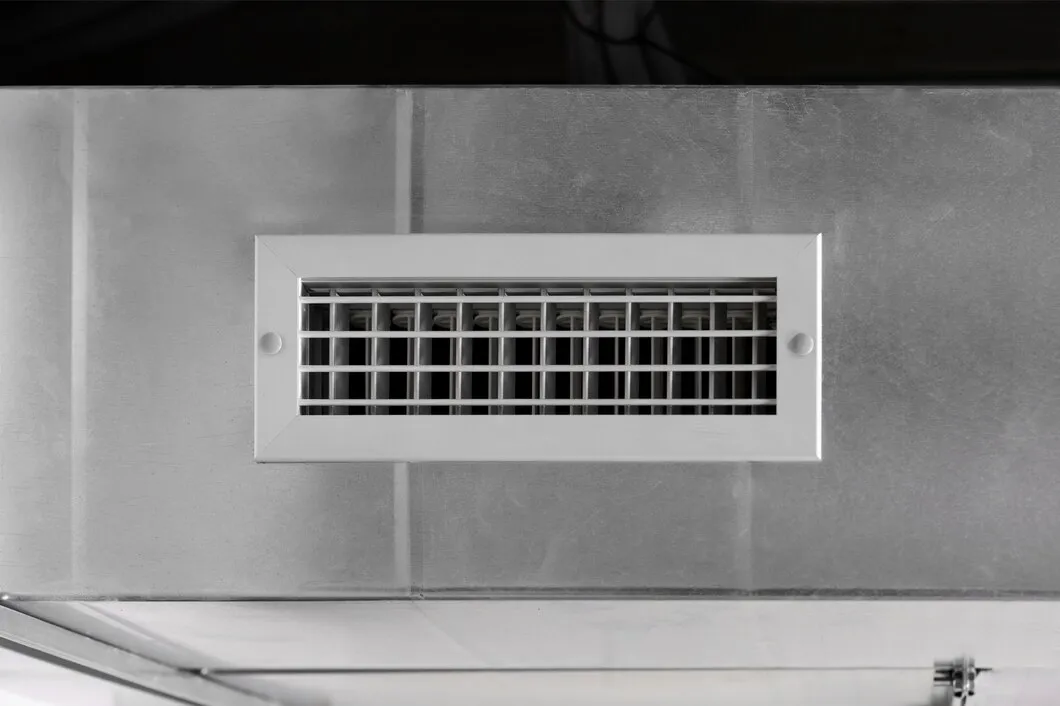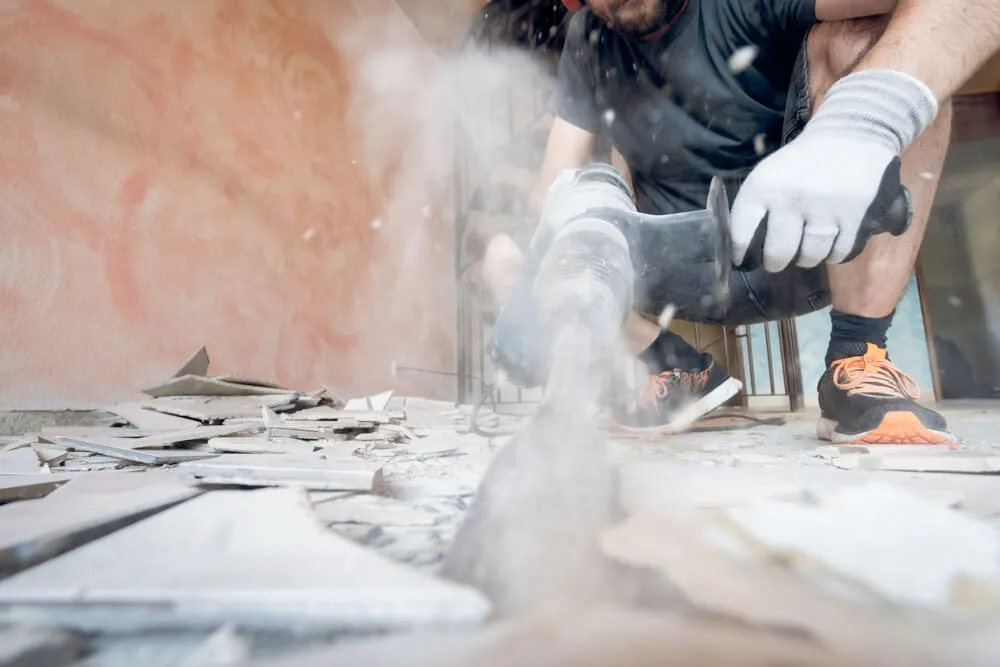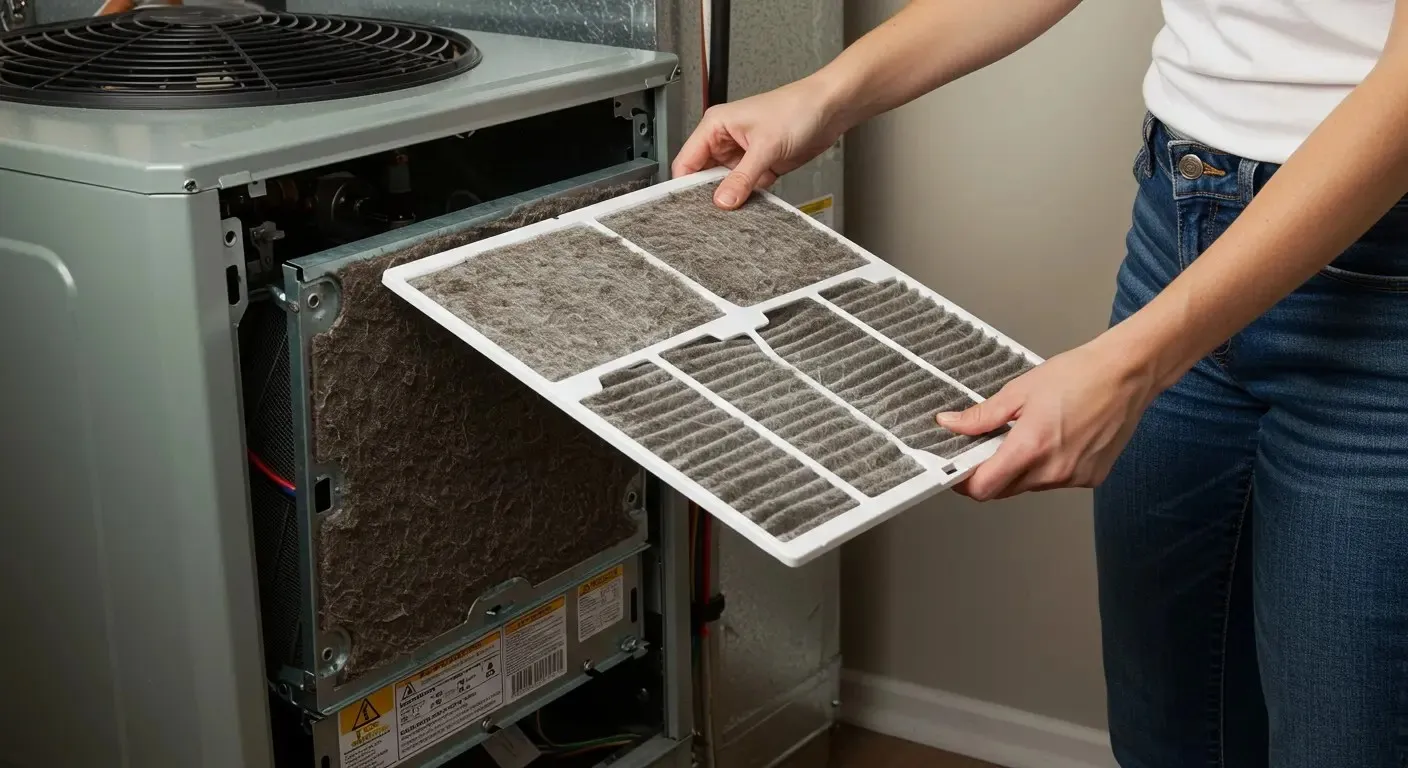
Mold is a common household nuisance that can cause health issues and damage property if left unchecked. While visible mold colonies are a clear sign of infestation, mold can also grow in hidden spaces, making it challenging for homeowners to identify its presence.
In this blog, we will explore whether mold is always visible and provide valuable insights into how you can detect mold in your home even when you can't see it.
Is Mold Always Visible?
Mold is not always visible to the naked eye.
Mold spores, which are tiny reproductive units, are airborne and ubiquitous. They can quickly settle on surfaces, lying dormant until they encounter favorable conditions for growth. Moisture, warmth, and other organic materials all cause mold growth.
As mold colonies develop, they become visible, and you might notice discoloration, fuzzy patches, or slimy textures on walls, ceilings, or other surfaces.
Related Post: Superior Air Duct Cleaning Identifies Symptoms of Mold Exposure
However, mold can thrive in hidden and less accessible areas, remaining undetected for long periods.
Some common places where mold might grow without being immediately visible include:
- Behind Walls: Mold can grow between walls due to leaks or pooling water. In this case, you might not see the mold directly. Look for musty odors or unexplained health issues that could be indicators of hidden mold.
- Under Flooring: Mold can develop under carpets, tiles, or hardwood floors, especially in areas near water damage.
- Inside Air Ducts: Mold spreads through ventilation systems, contaminating the indoor air without being visible.
- Attics, Basements, and Crawl Spaces: These areas often have high humidity levels, making them susceptible to mold growth.
Related Post: Why Should You Have Air Quality Tests In Your Home?
How Can I Tell If There's Mold In My Home If I Can't See It?
Detecting mold when it's not visible requires careful observation and sometimes the assistance of professionals.
Here are some signs to help you determine if there's mold in your home:
- Musty Odors: Mold can emit a distinct musty smell, especially when it has time to grow in hidden spaces. If you notice persistent musty odors you can't trace back to any obvious source, it's worth investigating further.
- Allergic Reactions: Mold spores can trigger allergic reactions and respiratory issues in susceptible individuals. Look out for unexplained allergy-like symptoms, such as sneezing, coughing, or skin rashes.
- History Of Water Damage: If your home has experienced water leaks, flooding, or persistent moisture issues, there's a higher likelihood of mold. Check these areas for any visible signs of water damage or mold-related problems.
- Moisture Meters: Moisture meters are handy tools that can measure the moisture level in various materials. Elevated moisture readings may indicate hidden mold-friendly conditions.
Does Mold Have To Be Removed Professionally?
The decision to remove mold professionally depends on the extent of the mold infestation and the affected area.
In some cases, small mold patches on non-porous surfaces can be effectively cleaned by homeowners using appropriate cleaning agents and protective gear.
However, larger mold infestations or mold growth on porous materials may require professional intervention for several reasons:
- Health And Safety: Large mold infestations can release spores into the air, increasing the risk of inhalation and potential health issues.
- Hidden Mold: As mentioned, mold can grow in hidden spaces. It’s challenging for homeowners to detect and address this growth effectively.
- Prevent Cross-Contamination: When removing mold without proper containment measures, spores can spread to other areas of the property. This leads to new mold growth in previously unaffected spaces.
- Identifying Underlying Issues: Without professional help, it’s harder to address the root cause of mold growth, such as leaks or ventilation problems.
Without regular cleanings, air duct systems can harbor mold and bacteria buildup. The professionals at Superior Air Duct Cleaning can help clear hidden mold with sanitation and deodorizing treatments.
Protect Your Home From Mold
To protect your property and your family's health, be vigilant for signs of mold, even when it's not readily visible,
We offer whole-home surface sanitization and comprehensive air duct cleaning services if you suspect mold but cannot identify the source. Regular duct cleaning and inspections can protect you and your family from harmful contaminants lingering in the air.
Contact us today in western Pennsylvania or eastern Ohio for a free quote.

Customer Reviews





Solving Poor Airflow Issues in Gibsonia Dryer Vents

Why Your Canfield Home Feels Stuffier in Summer: Duct Problems

Addressing Excessive Dust in Your Coraopolis Office Building

What Whistling Sounds from Your Wexford Vents Indicate

Combating Summer Humidity with Clean Air Ducts in Youngstown

Troubleshooting Burning Smells from Your Ellwood City Dryer Vent

How Restaurant Duct Contamination Affects Food Quality in Cranberry Township

Addressing Musty Odors from Your Canfield Air Ducts

Why Your Air Ducts in Wexford Are Making Popping Sounds

The Hidden Dangers of Lint Buildup in Youngstown Dryer Vents

Why Your Energy Bills Rise with Dirty Vents

Solving Common Dryer Performance Issues in Austintown

Fixing Uneven Airflow Problems in Wexford Homes

Why Your Austintown Dryer Is Overheating: Vent Obstruction Signs

What Makes Professional Duct Cleaning Different in Youngstown

Managing Spring Allergies with Clean Air Ducts

Slow-Drying Clothes: A Sign Your Dryer Vent Needs Attention

Signs of Animal Nesting in Your Ellwood City Dryer Vent

How Poor Duct Maintenance Affects Your Canfield Home

Removing Pet Dander from Your Home's Air Ducts

Common Causes of Air Duct Leaks in Older Homes

Why Dust Keeps Appearing in Your Coraopolis Home

How Dirty Ducts Impact Your Business Operations

Why Your Gibsonia Dryer Takes Longer to Dry Clothes

How Often Should Wexford Homeowners Clean Their Ductwork

Warning Signs Your Dryer Is Not Venting Properly

Black Spots in Air Vents: Addressing Mold Growth Problems

What Happens During a Professional Ductwork Inspection in Mars

Spring Cleaning Your Air Ducts: What You Need to Know

The Link Between Breathing Problems and Dirty Air Ducts

Health Benefits of Clean Air Ducts for New Castle Residents

How to Spot Dryer Vent Blockages in Your Youngstown Home

Air Quality Issues in Office Buildings: When to Clean Commercial Ducts

Common Air Quality Problems That Duct Cleaning Solves in Wexford

Strange Noises from Your Dryer Vent: What They Mean

What Air Pollutants Can Professional Duct Cleaning Remove in Canfield

How Clogged Dryer Vents Increase Fire Risk in Sewickley Homes

Understanding the Benefits of Professional Dryer Vent Cleaning

How Air Duct Cleaning Can Improve Your HVAC System Efficiency

Why Regular Duct Cleaning is Essential for Home Air Quality

The Necessity of Commercial Duct Cleaning Explained

Duct Disinfecting & Deodorizing

Preventing Home Hazards with Our Dryer Vent Cleaning Services

How Air Duct Cleaning Boosts Indoor Air Quality

Understanding the Role of a Duct Cleaning Company in Home Maintenance

Why You Need Our Skilled Duct Cleaning Professionals

The Steps Our Technicians Follow in Ductwork Cleaning

Benefits of Whole House Sanitizing for Healthier Living

Why Dryer Vent Cleaning is Important for Home Safety

Whole House Sanitizing: Keeping Your Home Safe and Clean

When to Schedule Air Duct Cleaning for Optimal Performance

Dryer Vent Cleaning: Essential for Preventing Fires

The Impact of Commercial Duct Cleaning on Workplace Health

How Air Duct Cleaning Enhances Your Home's Atmosphere

Whole House Sanitizing: Ensuring a Healthier Living Space

Preventing Risks with Our Dryer Vent Cleaning Services

How to Know When Your Home Needs Our Duct Cleaning Services

Essential Reasons for Scheduling Air Duct Cleaning Today

Prevent Fire Hazards with Professional Dryer Vent Cleaning

Understanding the Importance of Air Duct Cleaning Services

How Professional Dryer Vent Cleaning Prevents Home Fires

The Importance of Regular Dryer Vent Cleaning for Home Safety and Efficiency

The Process and Benefits of Thorough Ductwork Cleaning

The Benefits of Air Duct Cleaning Services for Your Home

The Benefits of Commercial Duct Cleaning for Your Business

Understanding the Difference Between Residential and Commercial Duct Cleaning Services

Guard Against Germs: The Advantages of Whole-House Sanitizing Services

The Impact of Residential Duct Cleaning on Indoor Air Quality and Overall Health

Enhancing Workspace Health: The Benefits of Routine Commercial Duct Cleaning

How Regular Duct Cleaning Can Impact Your Home’s Energy Efficiency

Strategies to Maintain Air Purity in Large Workspaces Through Commercial Duct Cleaning

Comprehensive Guide to Reducing Allergens with Professional Duct Cleaning Techniques

Freshen Your Space: Professional Duct Disinfecting and Deodorizing Explained

Maximize Home Air Quality with Professional Residential Duct Cleaning

Experience Superior Whole-Home Disinfection Services for a Cleaner, Healthier Environment

Importance of Regular Dryer Vent Cleaning for Safety and Efficiency

Commercial Duct Cleaning: An Investment In Your Business' Health And Success

How To Prevent Mold Growth In Your Air Ducts: Expert Tips For A Healthier Home

Is Mold Always Visible?

The Most Common Questions About Dryer Vent Cleaning: Answers From the Experts

The Ultimate Guide To Residential Air Duct Cleaning: Enhance Your Home's Air Quality

How Often Should You Clean Your Air Ducts?

Managing Pet Ordors Dender

What Does An Air Duct Inspection Include?

How to Choose a Duct Cleaning Company: 10 Questions to Ask

4 Ways Your Dirty Air Ducts Are Costing You Money

Top Benefits Of Air Duct Cleaning For Universities & Schools

A Guide To Air Duct Cleaning Equipment

Is Sanitizing Air Ducts Worth The Money?

4 Dangerous Warning Signs Your Dryer Vent Is Clogged

Easy Ways To Keep Your Home Mold Free

How Whole Home Sanitization Staves Off Fall Allergies

DIY Guide To Attic Insulation Removal: Tips And Tricks
.webp)
5 Must-Know Facts Before Buying Air Duct Cleaning Services

Air Duct Cleaning Tips After Home Renovation Or Construction

Natural Home Deodorizing Tips To Kill Bad Odors

Superior Air Duct Covers the Top Air Duct Cleaning Scams to Avoid

How Long Will A Dryer Last?

What Causes Humidity In Air Ducts?





